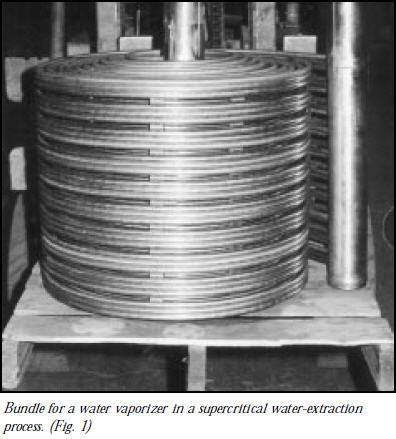
Helically Coiled Heat Exchangers Offer Advantages
Process heat transfer with conventional shell and tube heat exchangers is familiar to many engineers in many industries. Their use and performance is well-documented. Helically coiled heat exchangers, although they have been around for many years, are not as well known.
Helically coiled exchangers offer certain advantages. Compact size provides a distinct benefit. Higher film coefficients—the rate at which heat is transferred through a wall from one fluid to another—and more effective use of available pressure drop result in efficient and less-expensive designs. True counter-current flow fully utilizes available LMTD (logarithmic mean temperature difference). Helical geometry permits handling of high temperatures and extreme temperature differentials without high induced stresses or costly expansion joints. High-pressure capability and the ability to fully clean the service-fluid flow area add to the exchanger’s advantages.
Although various configurations are available, the basic and most common design consists of a series of stacked helically coiled tubes. The tube ends are connected to manifolds, which act as fluid entry and exit locations. The tube bundle is constructed of a number of tubes stacked atop each other, and the entire bundle is placed inside a casing, or shell (Fig. 1.)
